Learn
New Deal
FDR Promises a New Deal
In the 1932 Presidential election, Democrat candidate Franklin Delano Roosevelt promised in his campaign a "New Deal" for America. He won by a large margin and began his New Deal plans immediately.
New Deal was FDR's plan to improve the economy. It was based on Three Rs:
- Relief
- Recovery
- Reform
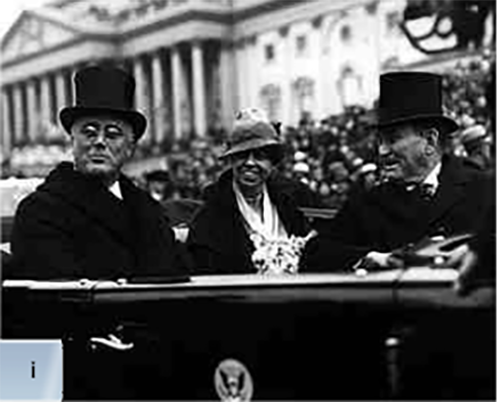
Fireside Chats
FDR used the radio to inform the American public of his actions and efforts to get us through the economic hard times.
He called his radio broadcasts Fireside Chats. They gave people the feeling that FDR cared and was there for them.
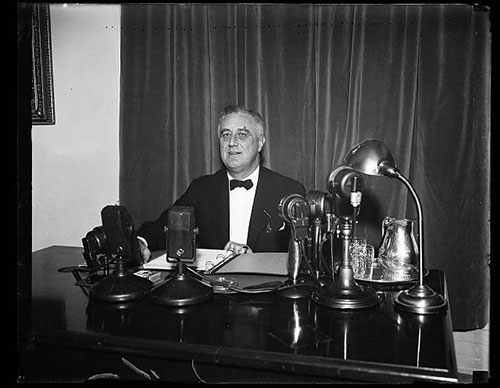
Second Bonus March on Washington
WWI Veterans staged a second march on the Capitol to get their pensions early. FDR handled the situation much better than Hoover.
Instead of being evicted by force, the veterans were provided campsites to maintain and were eventually offered jobs under FDR's new government programs.
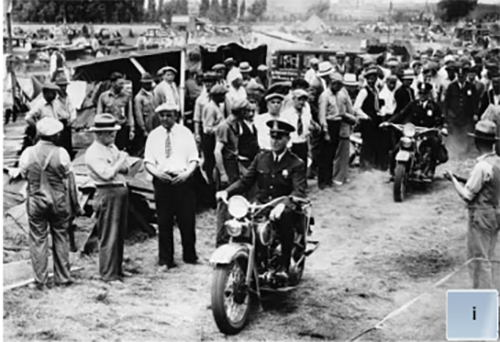
The First Hundred Days
During the First Hundred Days of his presidency, from March to June of 1933, FDR pushed program after program through Congress to deal with the problems of the Depression.
There were so many New Deal programs, referred to by initials, that they were collectively called Alphabet Soup.
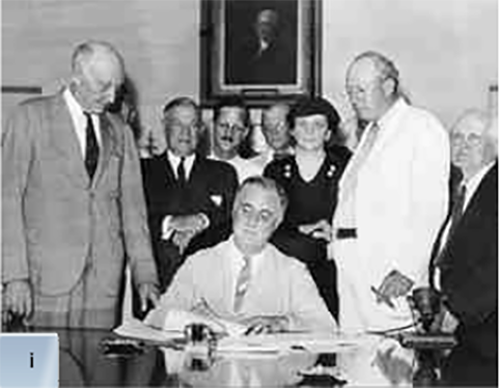
FDR Orders Banks to Close
FDR called for a "Banking Holiday" to help restore confidence in the banking system. He encouraged Congress to pass the Emergency Banking Act, which closed banks for four days and established the Federal Deposit Insurance Corporation (FDIC) to insure individual bank accounts for up to $5,000.
Listen to "We're in the Money" from the 1933 film Gold Diggers.

Providing Relief and Creating Jobs
Federal Emergency Relief Administration (FERA) - FERA sent federal funds to overburdened local agencies. FERA functioned similiar to the way FEMA does today, providing immediate emergency relief for those in need.
Civil Works Administration (CWA) - CWA provided jobs building and improving roads, parks, airports, and other facilities. It was a tremendous morale booster for up to four-million previously unemployed workers.
Civilian Conservation Corps (CCC) - The CCC was FDR's favorite program. It put more than 2.5 million young, unmarried men to work on conservation and environmental projects around the nation.

Programs to Help Businesses and Farms
Securities and Exchange Commission (SEC) - The SEC was set up by Congress to regulate the Stock Market. Companies had to include certain information in their financial statements among many other regulations established by the SEC to prevent another stock market crash.
The Securities and Exchange Commission still exists today, regulating the Stock Market and protecting investors.
The National Recovery Administration (NRA) was established by the National Industrial Recovery Act (NIRA) to outline fair business and labor practices.
The NRA regulated wages, working conditions, production, and prices. It set a minimum wage and it gave organized collective bargaining, or the Negotiation of wages, hours, and working conditions between an employer and an organized body of employees, usually a labor union, rights.
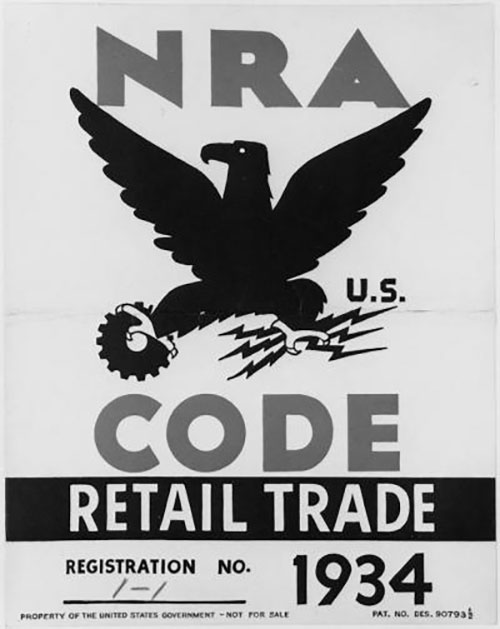
Public Works Administration (PWA) - The PWA implemented massive public works construction projects including dams and hydroelectic plants.
It was directed by the Secretary of the Interior, Harold Ickes.

Agricultural Adjustment Administration
Agricultural Adjustment Administration (AAA) - The AAA attempted to help farmers raise farm prices through subsides. The AAA paid farmers a subsidy not to raise certain crops or animals. The idea was that by lowering production, prices would rise.
The AAA was just one of FDR's programs that was eventually ruled unconstitutional by the Supreme Court.

Tennessee Valley Authority
Tennessee Valley Authority (TVA) - TVA provided cheap hydroelectric power, flood control, and recreational opportunities to the entire Tennessee River Valley.
It helped farmers and created jobs in one of the country's least developed regions, the southeast.
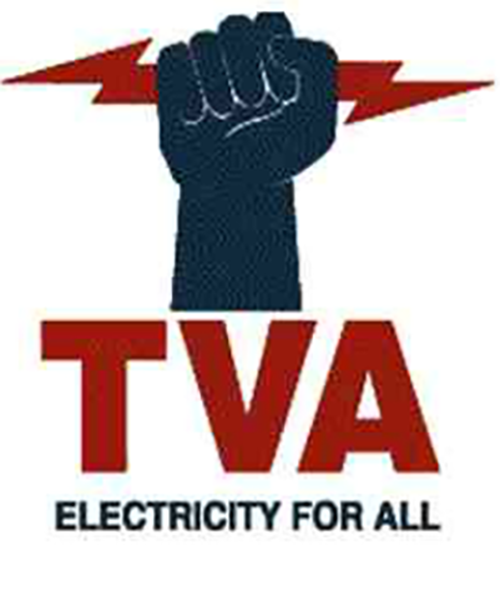
The TVA projects extended throughout the southeast, including the state of Alabama.
Below are some photographs from TVA Alabama projects
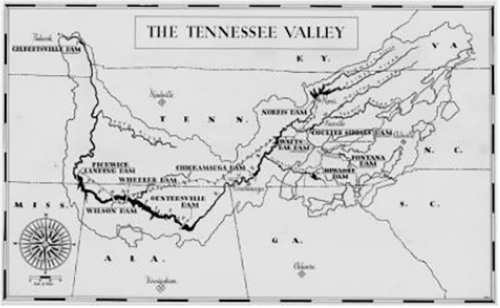

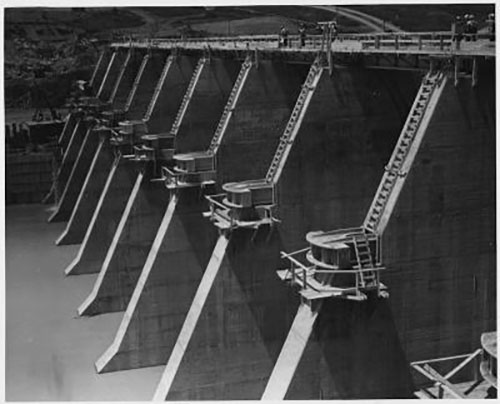
Second New Deal
Second New Deal
Some elements of the New Deal were ruled unconstitutional by the Supreme Court, so in 1935, FDR launched new legislative activity called the Second New Deal.
The Second New Deal included more social welfare benefits, stricter controls over business, stronger support for unions, and higher taxes on the rich.
New Labor Legislation
The Wagner Act legalized collective bargaining and other union rights aimed at protecting the worker.
The National Labor Relations Board (NLRB) enforced provisions of the Wagner Act.

Works Progress Administration
Works Progress Administration (WPA) - The WPA provided jobs building playgrounds, schools, hospitals, and airfields. It helped the arts by supporting artists and writers.
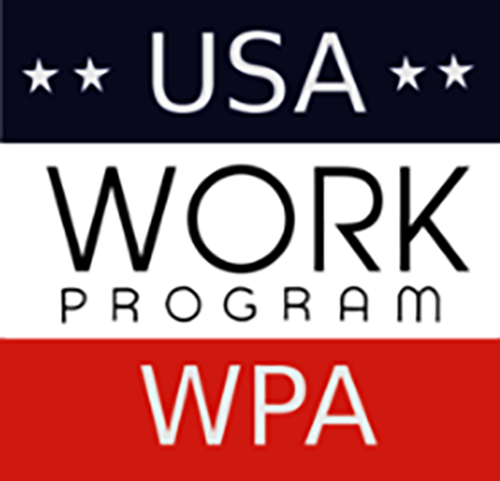

Listen to "Whistle While You Work".
The Social Security Act
The Social Security Act of 1935 was the most significant New Deal law. For the first time in its history, the federal government took responsibility for providing a "safety net" for the neediest Americans. It established a Social Security System that provided:
- Old-age pensions and survivor's benefits
- Unemployment insurance
- Aid for dependent children
- Disability for those who cannot work
The Brain Trust
Roosevelt did not have one particular strategy to fix the economy. He, along with his cabinet and trusted advisors, known as the "Brain Trust," would simply try out programs.
The Brain Trust was a group of young college professors with innovative ideas. FDR used his "Brain Trust" during the campaign of 1932 as well as afterwards to shape his New Deal Programs.
Read FDR's Alphabet Soup to review the agencies set up by the New Deal.